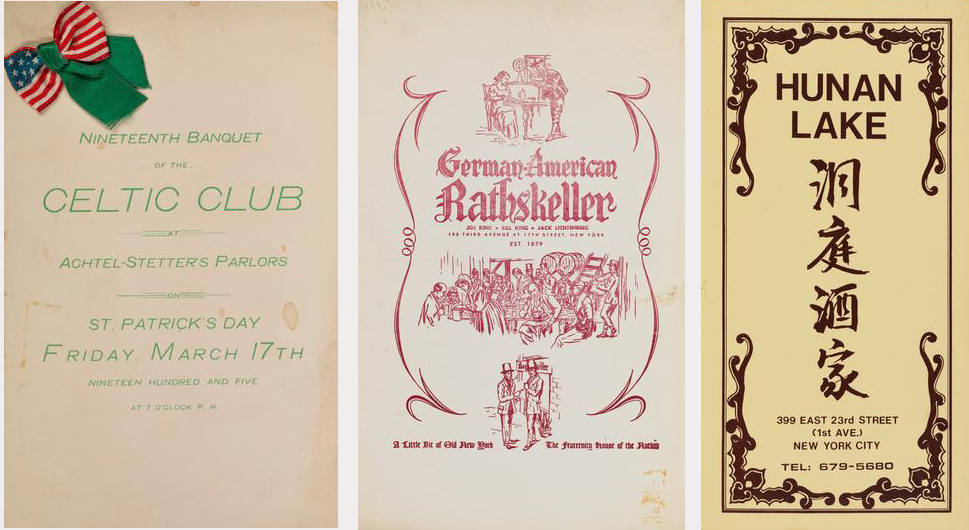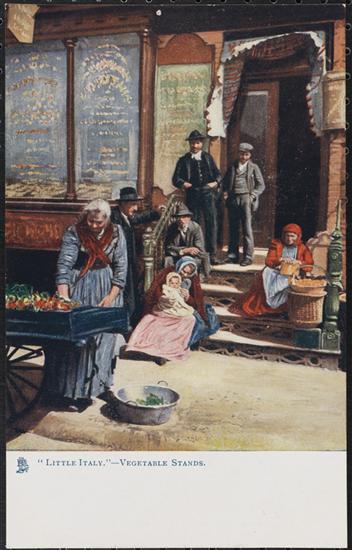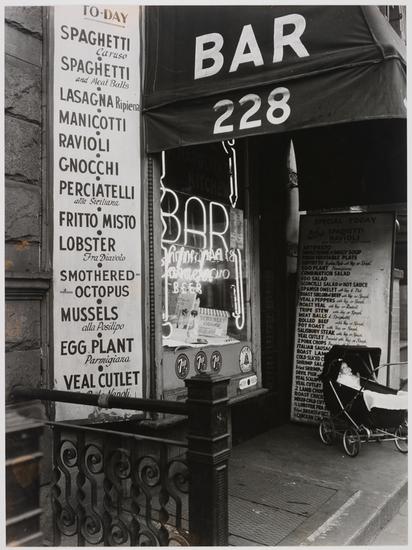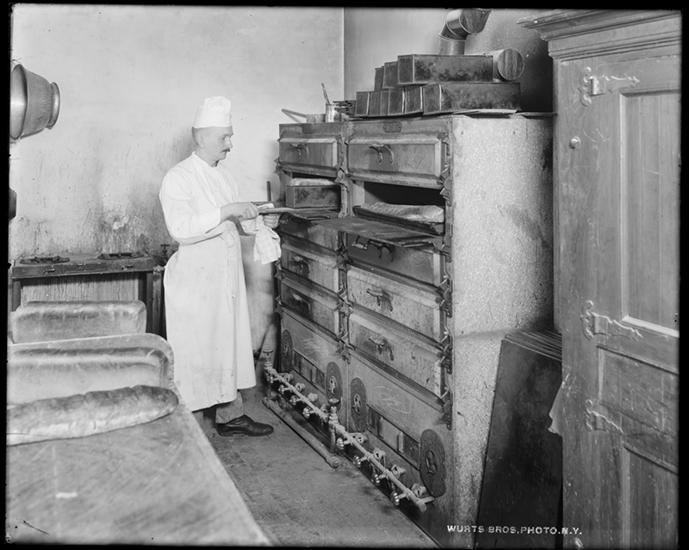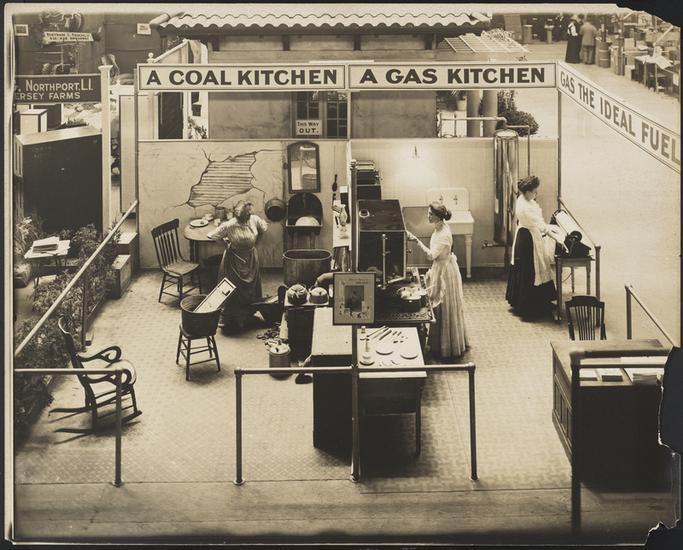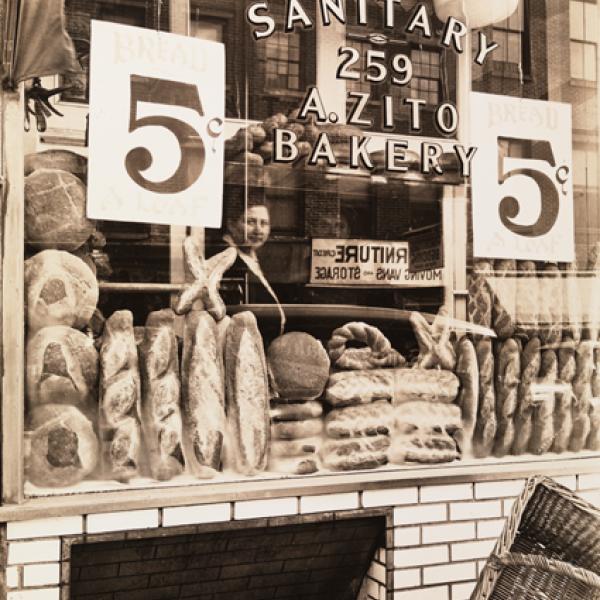New York by the Slice
A City of Pizza
Tuesday, November 20, 2018 by
New York is a city of immigrants. People from across the world come here to begin their American story. Each group brings ingredients to the table that make New York a unique combination of cultures and experiences.
As people all over the United States gather for Thanksgiving meals, we celebrate one of New York’s great food traditions: pizza.
When Southern Italian immigrants came to the United States in the late 1800s and early 1900s to escape poverty, many of them made a home in an enclave in lower Manhattan that became known as Little Italy. These new Americans brought a variety of traditions with them that became part of the American food landscape.
However, pizza in its original form was almost impossible to make by traditional methods in the kitchens found in New York at the time. Hungry people who miss home will always find a way, and so, new traditions were born out of the greatest selector of all, necessity.
As with most foods, there were different regional varieties of pizza when Italians began coming to New York and introducing pizza to the American lexicon. There was the Genovese focaccia, the Roman pizza al taglio, and the Sicilian sfincione among so many others. To some degree bread dough baked with toppings can be found in most cultures around the world. The pizza that gave birth to the common American pie can most easily be traced back to Naples, Italy.
Neapolitan pizza has a few key characteristics. In 1984, an organization was founded to certify and protect proper Neapolitan pizza, Associazione Verace Pizza Napoletana (AVPN). A pizza approved by the AVPN is given Denominazione di Origine Controllata, or D.O.C., certification, which is usually reserved for authenticating fine wines. There are requirements for the time the dough rises, the time the dough cooks, the temperature the pizza cooks at, and even the temperature the pizza rises at and the temperature the water is when the dough is mixed.
However, there were no issues with D.O.C. standards in Little Italy in 1905. There was flour, water, tomatoes, and cheese so there could be pizza. Traditional pizza Napoletana is baked in a wood-fired, domed, stone oven that produces heat between 900-1000 degrees Fahrenheit and can cook a pizza in two to three minutes. The problem was that there were no such ovens on Mulberry Street in 1905.
New York Italians in search of pizza ovens began using the next best thing, bread ovens. Commercial bread ovens have much more space than a pizza oven in order produce greater volume. Pizza Napoletana cooks so quickly, and it is eaten on the spot, so turnover happens at a steady rate. Bread ovens need to produce a larger quantity of product that will be sold later off site. Along with the heating sources used in New York at the time, this innovation allowed cooks to make much larger pizzas than would be the norm.
The other factor that led to the original New York pizza style was the heating source. While Neapolitan pizza ovens burn wood for a bright hot heat, the heating source in New York at the time was coal. Coal burned hotter than wood and allowed the large bread ovens to get up to temperature that could rival the wood burning pizza oven.
These adaptations led to the first New York Neapolitan pizzas. Large pies close to the Neapolitan style but changed by a bigger faster world. While a Neapolitan pie is eaten by one person (usually with a fork and a knife) the larger bread oven pies could be sliced and shared. An entire new culture around pizza could begin.
The next change to pizza in New York came in the as the world changed from coal to gas and New York went with it. As businesses and homes changed from coal to gas, pizza had to evolve with them. Gas cooks at a lower more controlled heat and so pizza changed again.
Dough conditioners such as olive oil were added to help the dough cook more slowly in the gas oven without drying out. Toppings that cooked quickly in blinding hot heat were replaced by heavier toppings that could hold up to the longer cooking times. All of these adaptations are reflected in what we have come to know as the New York slice of pizza. One slice off a larger pie, laden with sauce and cheese, with a pliable dough that can be (should be) folded to help keep it under control. New York pizza is a food that can be enjoyed as an individual on the go or in a communal setting. It is perfectly at home in a restaurant booth, on the couch, or sitting on a park bench.
From New York pizza spread into America and then back out into the world at large. Different American locales all have their own pizza inspired by their immigrants and their unique circumstances. New Haven claims to have developed Neapolitan American pizza concurrently to New York City and many pizza experts hold it up as the gold standard of American pizza. New England has thin, round pan fried pizza. Detroit has small, square pan fried pizza. Chicago has deep dish pizza. California even has a claim on American pizza by adapting Neapolitan American methods to use with gourmet ingredients.
However, just as Naples is considered the birthplace of modern pizza, New York City is recognized as the epicenter of the American pizza culture that has taken over the world. The influence of the New York slice can be seen inside almost every fast food pizza box.
We think of the triangular pizza slice as commonplace, but it is something that New York has taken from classical roots and adapted into a phenomenon. Something as refined and iconic as the French baguette only began appearing on menus in the 1920s. Lombardi’s, which is seen as the forerunner of most American pizza parlors, opened their doors on Spring Street in 1905, predating its yeasty cousin by over a decade. New York pizza isn’t even that far removed from its Neapolitan forbearers by much.
The pie that most defines classic pizza is the Margherita. As legend has it Queen Margherita visited Naples and wanted to sample the local cuisine. Pizzeria Brandi designed a new pizza for the queen. Red tomato sauce, white mozzarella cheese, and green basil leaves to mimic the new Italian flag. That iconic pizza was baked in 1889, just 16 years before Lombardi’s began serving pizzas out of their coal fired oven. So, New York pizza was right there all along, changing with the times and taking over the world.
Stop by the Museum of the City of New York to try some pizza at Amy's Bread at Chalsty's Café. It is unique, just like any other New York pizza.
